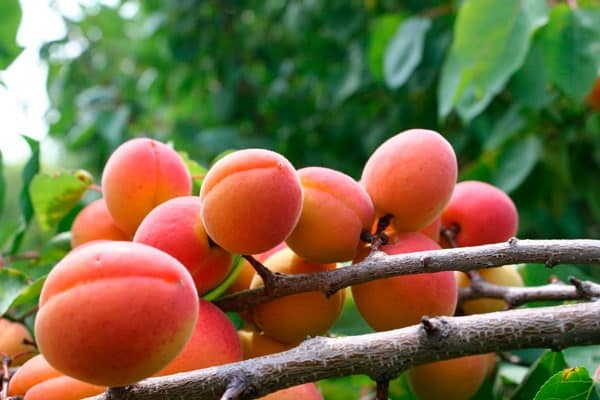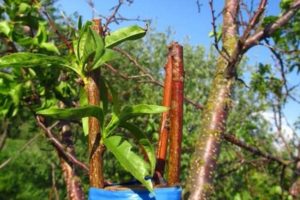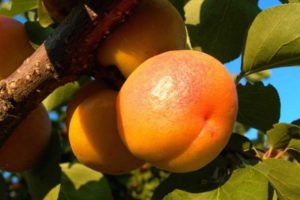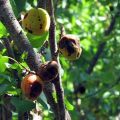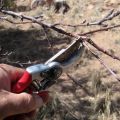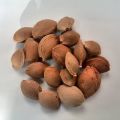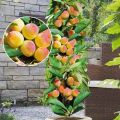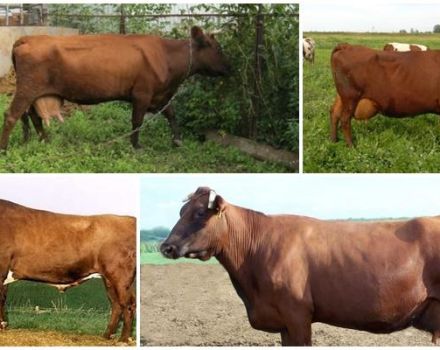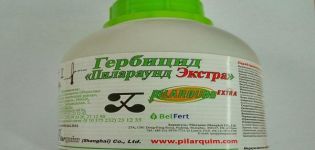Why apricot blooms, but does not bear fruit, the reasons and what to do about it
Apricot is an unpretentious tree, but it requires competent and timely care. If the preventive measures taken to improve the growth and quality of the crop are violated, the tree may stop bearing juicy fruits or completely empty. Why does the apricot not bear fruit, and what if the fruit does not ripen? Let's analyze the main causes and ways to eliminate them.
Main reasons
It all starts with the blossoming of the apricot tree - no flowers, no fruit. If the flowers are showered with empty flowers or do not appear at all, then there is a problem that needs to be solved. The first factor causing the unpleasant phenomenon is a genetic failure. This is a rare phenomenon inherent in any element of living nature.
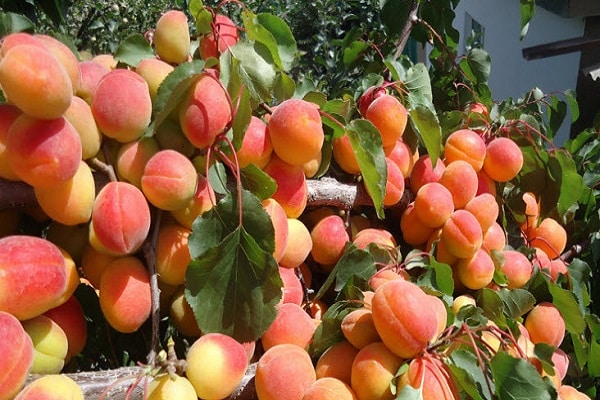
Some trees are not capable of bearing fruit, therefore, when buying seedlings in specialized stores or breeding a new variety by cuttings, this important point must be taken into account. However, there are other factors that prevent the tree from fulfilling its biological program. We will talk about them further.
Wrong place
The apricot tree is not famous for its high survival rate, so choosing a place for its growth is an important point. You need to pay attention to the climate and soil composition suitable for the cultivated variety, however, there are general recommendations for any type of apricot tree.
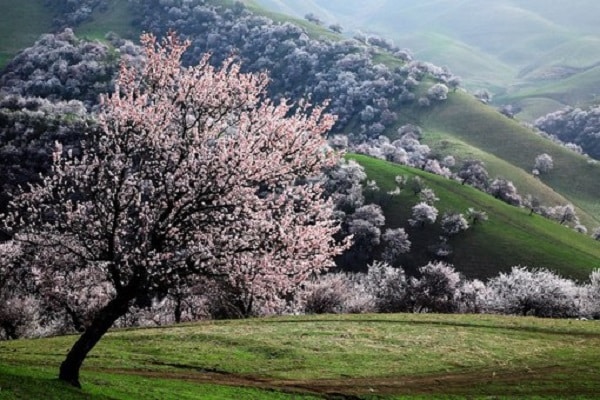
Weather
The seedling site should be sunny and warm, but protected from harsh cold winds. Experienced gardeners recommend enclosing the apricot trunk with a small fence or painting it white so that the plant reflects direct sunlight, but receives more heat. Apricot tolerates low temperatures well, so cold winters do not cause poor yields.
Soil analysis
Full fruiting is highly dependent on the soil. The soil must be well drained to ensure an uninterrupted supply of oxygen to the root system. Ideal soils for apricots are loamy, flavored with peat and have neutral acidity. If the tree is planted in heavy clay soil, regular measures are taken to improve it - loosening, digging, adding manure and sand.
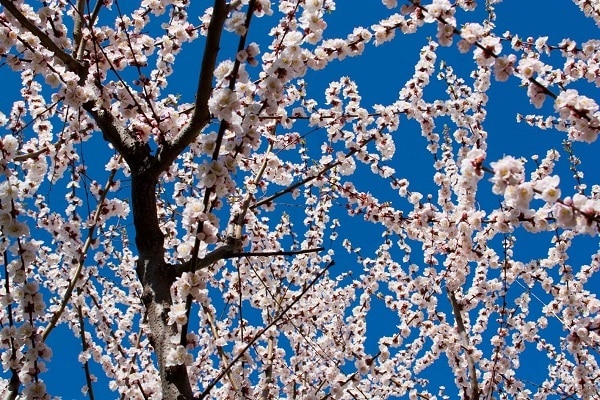
Incorrect cropping
Pruning overdried or diseased branches is needed to form the crown and improve yield. There are situations when the gardener neglects this manipulation or does it incorrectly. When flowering is lost, trimming occurs in two stages:
- At the end of May, after the germination of new shoots, "green" pruning is performed. Growths are shortened by half, which improves crown ventilation and allows the tree to receive more sunlight.
- If there is a possibility that the apricot does not bear fruit due to old age, a rejuvenating pruning is performed. It consists in removing old bare branches and wood, as well as shortening the overgrowing branches on the top of the crown. Practice shows that the next year the tree continues to bloom and bear fruit abundantly.
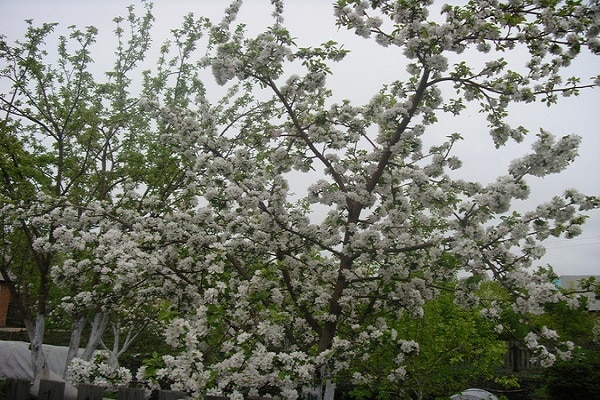
Diseases and pests
Preventive measures in spring and autumn will protect apricots from pests and fungal diseases, which also cause irregular harvests. To protect trees of any age it is necessary:
- Cleaning of fallen leaves. Rotting on the site lures harmful insects.
- Loosening of near-trunk circles in late autumn. During this period, many insects burrow into the ground for wintering. Loosening will pull them to the surface, and the coming frosts will not leave any chance of survival.
- Preventive treatment with drugs. For spraying, a solution of 3% copper sulfate or Bordeaux mixture is used, during the year the apricot branches are irrigated with biofungicides. Diazonin preparations can be used during egg laying.
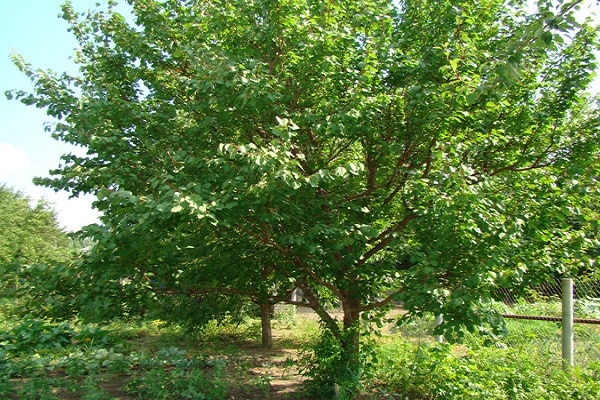
If pests have been noticed on the tree, stopping flowering is a logical outcome. Then, in addition to preventive measures, the trees are sprayed with insecticides. Among all existing gardeners, Marshal is distinguished. It has a prolonged effect and effectively copes with pests.
However, the composition is highly toxic, and is used only when folk and biological methods of struggle are powerless.
It is important to be careful when spraying so that pesticides do not come into contact with the skin, eyes and respiratory tract.
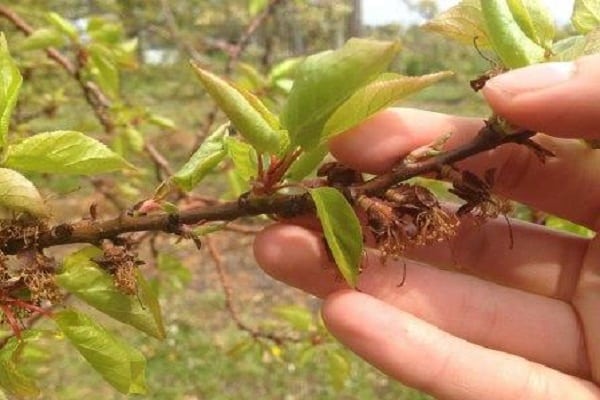
The rules of feeding and watering are violated
Often the cause of poor yields is a violation of the basic rules of care - feeding and watering. Apricot trees are unpretentious, but they still require special attention. Watering is done at least four times a year:
- In April, before the flowers appear.
- In May, when shoots grow.
- One week before the fruit is fully ripe.
- In late autumn, before wintering.
In hot, sultry summers or in arid regions, watering is done a little more often. If the year is rainy, the tree does not need additional moisture. It is important to follow the rule of the golden mean and remember that apricot does not tolerate both dryness and excessive moisture.
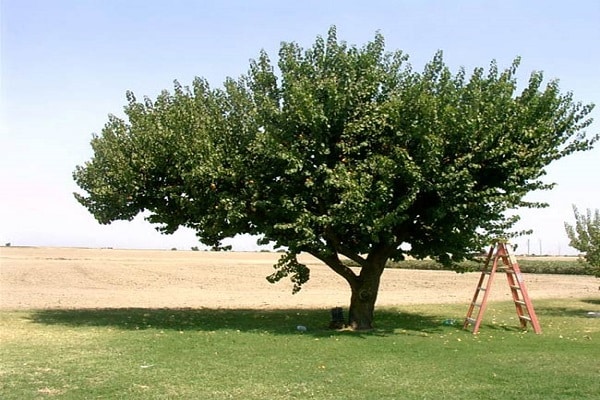
If all the watering rules are followed, and the tree for some reason does not bear fruit, then, most likely, the apricot needs feeding. For normal development and fruiting, the tree needs nitrogen, which is contained in large quantities in manure. Root dressing in the periosteal circles is applied before the formation of flowers.
For adult plants, complex fertilizers are suitable, which include superphosphate, saltpeter and potassium chloride. Timely top dressing will help the apricot stock up on the necessary elements that give strength for further flowering after energy-consuming wintering.
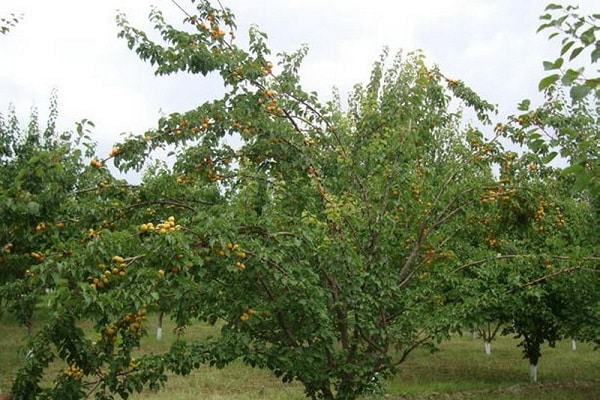
Apricot blooms but does not bear fruit
In early spring, the apricot tree is covered with pinkish-white flowers and prepares for the first fruits. However, this is not always the case. Sometimes flowering disappears, and the fruit does not form. Why is this happening, and what to do if the apricot blooms, but does not bear fruit? There are three reasons: early warming, poor pollination and age.
What to do?
Consider the options:
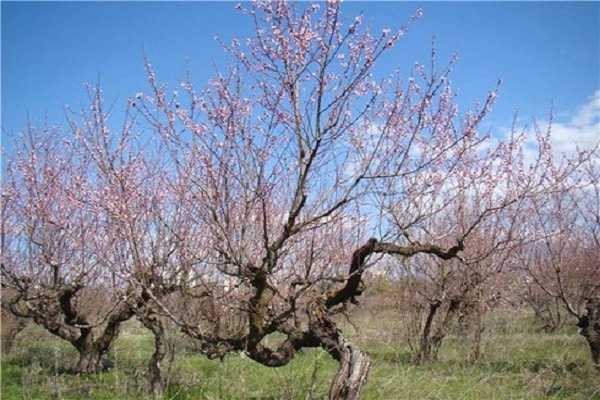
- Early warming. Early warming is dangerous because it provokes premature flowering, as a result of which the rudiments of fruits die from night frosts, and have not formed on the tree.Some gardeners fight frost by fumigating the garden with smoke bombs or a mixture of straw, tobacco and manure. But a greater effect can be achieved by postponing flowering for a while. To do this, they resort to spraying the garden with auxin or a solution of copper sulfate.
- Poor pollination. Pollination is the process of transferring pollen from the flowers of one tree to another. Some types of apricot are self-pollinated. However, there are also those who need help in this difficult matter. Pollination is natural and artificial:
- natural. Pollen is carried by insects (butterflies and bees) or by the force of the wind. To ensure the work of the process, the apricot is planted near pollinating trees (poplar, birch, fruit crops), and flower beds of marigolds are placed nearby, which have a specific smell and simultaneously scare off pests. To draw the attention of bees to the apricot, even in cloudy weather, the branches are sprayed with sweet water;
- artificial. The process involves manually transferring pollen with a brush or toothbrush. The tool is brought close to the pollinator flower for 10 seconds, after which the pollen is transferred alternately to all apricot inflorescences. Statistics show that the procedure helps to increase yields by 50%. For the process to bring maximum efficiency, it is carried out at the beginning and middle of flowering. After artificial pollination using multiple pollinators, the yield will be different from the previous one - the fruits may have an unusual shape or taste.
- Age. Often the reason why an apricot does not bear fruit lies on the surface. If a plant has been producing crops for many years and has stopped abruptly, the reason may be its aging. Rejuvenating apricot pruning extends the average fruiting period by 2-3 years, but no more.
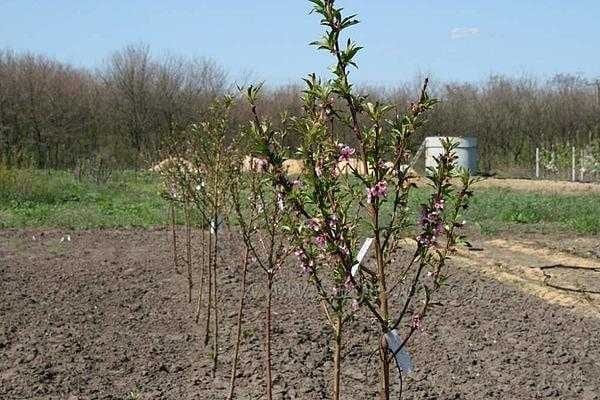
How long does an apricot bear fruit after planting?
A newly planted plant does not immediately yield its first harvest. The year in which the apricot begins to bear fruit after planting directly depends on the following factors:
- Reproduction method. Purchased seedlings bear fruit for 3-4 years. In order to avoid an increase in the term, the seedling is dug into the ground so that the top sticks out at least 5 centimeters. If a gardener dares to grow a tree from a seed of a local fruit, the first harvest will appear 5-6 years after planting an apricot. The tree requires pruning at all times. This will significantly speed up the timing and quality of the first harvest. Plants grafted and propagated by cuttings bear fruit after 2 years. This breeding method is the most laborious, but quite fast.
- Varietal affiliation. When purchasing a seedling, it is important to pay attention to the quality indicators of a plant suitable for a particular region. Rapid survival rate contributes to early fruiting. The answer to the question of when the hybrid apricot will begin to bear fruit is rhetorical. Varieties bred by cuttings or grafting often differ from the standard ones, and the period of their fruiting can only be learned from personal practice.
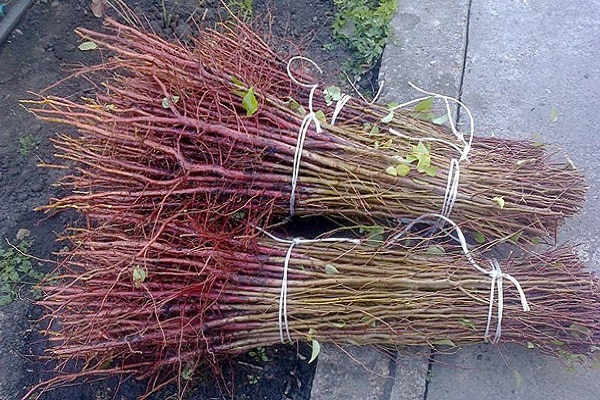
Why are the fruits not poured?
It happens that the apricot tree successfully passes all stages of development, and at the final stage of ripening it encounters a problem - the fruits are not poured. Unripe, green apricots begin to rot, dry out or fall off the tree.
What to do?
Consider:

- Sunburn. After a long period of hibernation, spring is inevitable. During this period, apricot trees are vulnerable, and their trunks and branches are exposed to a lot of sunlight. Not having time to adapt to new weather conditions, the apricot risks getting sunburn. A damaged tree is not capable of producing a high-quality harvest, therefore, anti-burn measures should be taken in advance.Reduce sunburn damage by bleaching with chalk or lime. An even more successful way is to cover the barrel with synthetic paint (VS-511, Protection).
- Feature of the variety. Fruits of some varieties are biologically incapable of ripening (for example, Manchurian apricot). When choosing seedlings, you need to carefully study the properties of a particular species and their survival rate in the local region.
- Diseases. Fungal infection is common in cooler climates. It attacks the root system and spreads to the aerial parts of the plant, causing fruit to rot. Experienced gardeners call it monoliosis or fruit rot. To detect a fungus, it is enough to carefully examine the condition of the apricot tree. Dry leaves, cracked bark, and green, rotting fruits indicate a high likelihood of having this disease. The main reason for the appearance is a violation of the preventive treatment schedule. To help the tree cope with this scourge, it is necessary to periodically spray it with antifungal drugs, burn rotting foliage on the site, regularly prune dry branches, destroy weeds and loosen the ground. The fruits are treated with copper sulfate or special preparations - Topsin or Hom. Monoliosis is a rapidly spreading fungus, therefore, preventive treatment should be carried out for all plants in the garden.
Given the above information, you need to think about a high-quality apricot harvest in advance. If in the current year the fruits could not ripen, do not despair.

Green apricots have useful properties and are saturated with fiber, iron, vitamin C. It is undesirable to use them in their pure form, but processing them into jam, jam or compote is another matter.
